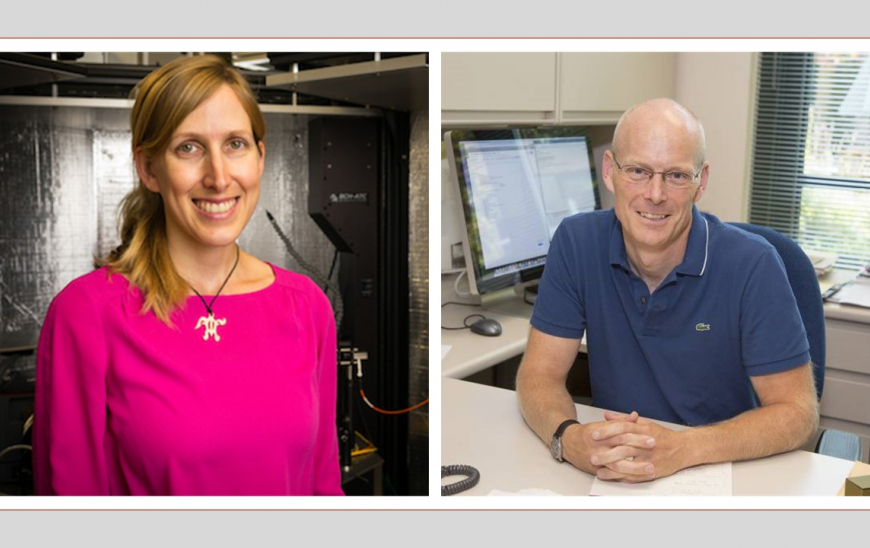The Stanford School of Earth, Energy & Environmental Sciences is now part of the Stanford Doerr School of Sustainability.
This page is currently being maintained for archival purposes only. For the latest information, please visit us here.
Two new Energy Frontier Research Centers at Stanford
By
Nathan Collins
August 8, 2018

Stanford will soon be home to two new Department of Energy-funded Energy Frontier Research Centers, aimed at transforming the way energy is generated, transformed, stored and used.
The EFRC program is now in its ninth year and currently funds 42 centers nationally. The two new centers, being led by Jennifer Dionne and Tony Kovscek, bring to three the number based at Stanford: Friedrich Prinz, a professor of mechanical engineering and of materials science and engineering, and Stacey Bent, a professor of chemical engineering, ran the Center on Nanostructuring for Efficient Energy Conversion from 2009, when the EFRC program began, until 2014.
Stanford’s two new centers, which will each receive several million dollars a year over the next four to five years, take on quite different problems in energy. Dionne, an associate professor of materials science and engineering, will lead Photonics at Thermodynamic Limits, which aims to develop new, exquisitely structured materials that reflect, radiate and otherwise interact with light, with applications in the energy sector and beyond.
“Our goal is to create optical materials with the highest possible efficiency,” Dionne said, such as mirrors that reflect upward of 99.999 percent of the light that falls on them, and then use those materials to develop applications including extremely efficient and self-cooling solar panels, energy storage and even new systems for powering spacecraft.
The first task, Dionne said, is to better understand how light interacts with materials at the atomic level, since current theory is “both nascent and extremely challenging.” With a deeper understanding of those interactions, researchers can begin to design and build materials with atomic-scale detail – and figure out how to measure those materials’ efficiency, given that standard tools are often not precise enough to tell the difference between 100 percent efficient and, say, 99.999 percent.
“With strong interaction between theory, materials development and materials characterization, our team hopes to design systems that improve energy efficiency” in applications such as solar cells or optical energy storage, said Dionne, who is an affiliate of the Precourt Institute for Energy. Her team will bring together physicists, chemists, materials scientists and engineers at Stanford, SLAC National Accelerator Laboratory and elsewhere to address each of those challenges.
Where Dionne is working at the atomic scale, Kovscek, a professor of energy resources engineering, is looking to tackle a problem with larger physical scale: how to make oil and gas exploration vastly more efficient. Kovscek will lead the Center for Mechanistic Control of Water-Hydrocarbon-Rock Interactions in Unconventional and Tight Oil Formations, which will investigate the fundamental science of coupled physical, chemical and mechanical processes underlying hydraulic fracturing, better known as fracking, in order to improve recovery efficiency and reduce environmental impact.
Fracking operations, Kovscek said, are costly and the “recovery factors” from such formations are typically low. Currently, about 75 percent of natural gas and 95 percent of oil in the shale formations remains after production operations end.
“Our proposal is really about fundamental science to understand the mechanical properties of shales,” said Kovscek, who is the Keleen and Carlton Beal Professor of Petroleum Engineering and a senior fellow at the Precourt Institute for Energy. “The premise of our center is that with that knowledge, those recovery factors are going to go up and the environmental impacts are going to go down.”
One possibility for reducing environmental impact the center will explore: using carbon dioxide instead of water for fracturing. Displacing natural gas with carbon dioxide, which is denser, could be a way to sequester carbon underground and out of the air, where it causes global warming.
Dionne is also a member of Stanford Bio-X and the Stanford Neurosciences Institute.



